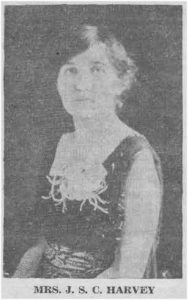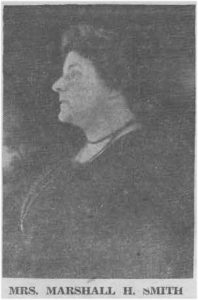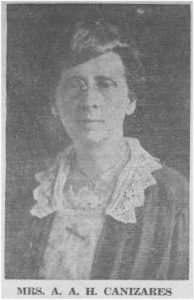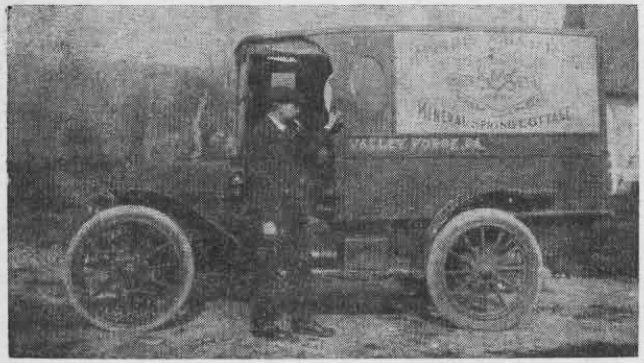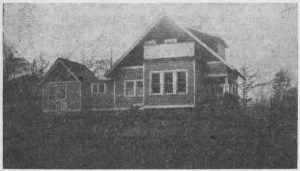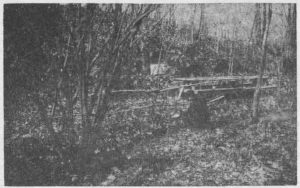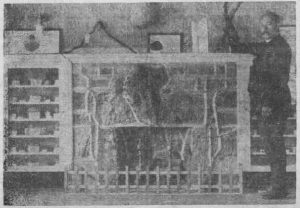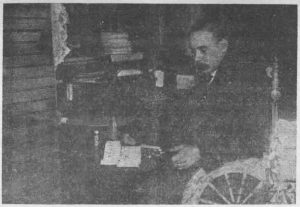Very often, as your columnist goes through back files of “The Suburban” for information on a particular subject of which she may be writing at the time, her eye is caught by an especially intriguing headline.
So it was, a year or so ago, when she was searching for information on by-gone Christmas times in Wayne. In the December 1922 issue of the paper, a story entitled “Eleven Acres of Diamonds” caught her attention. It proved a fascinating tale indeed, particularly as those eleven acres lay not very far from Wayne. And now, 30 years after the original article appeared some reader of the column may be able to bring us up to date on “what happened next”.
The first paragraph of the story reads: “On a 11-acre farm just half a mile beyond Valley Forge, where Washington and his ragged, barefoot soldiers trod valiantly back and forth so many years ago, a modern Golconda has recently been discovered, with wealth enough to have clothed and armed the entire Continental Army and brought the war to a speedy and successful conclusion.”
Throughout the story, these fabulous 11 acres are given no more definite location. The owner was “a modest and unassuming carpenter, Morris A. Barr” who at that time lived in “a little framed cottage at the end of the property.” One day in July, 1914, while he was walking beside a tiny stream that ran through his land, he noticed a number of “glittering sparks” in the rocks beneath the water. When he showed a jeweler in Ardmore pieces of this rock, the jeweler pronounced the “glittering sparks” to be gold.
Since there had been several such finds in the general vicinity, this news was not so startling as it might have been. However, it was interesting enough for Mr. Barr to show various other pieces of mineral which he had picked to Colonel Henry C. Demming, at that time consulting mineralogist, geologist and chemist of the state of Pennsylvania.
When the latter pronounced them precious stones, Mr. Barr began to realize the possibilities of the value of his property. He then determined to make a study of these specimens for himself and, later on, various lapidists confirmed the interesting discoveries he made in regard to the variety of these specimens.
In a report compiled for the Pennsylvania Railroad by Colonel Demming, in regard to the natural rock and mineral resources of the State, the fact was brought out that 71 of them were to be found on Mr. Barr’s property. These included, according to the report, “veins of platinum, tin, and quicksilver (the first discovered in Pennsylvania), while in the list of gems were also some that had never been found before in the State”. Among these precious stones were, according to the account, “three white sapphires, which were exceedingly rare gems, besides opals, topazes, blue sapphires, jasper, sardonyx, lapis lazuli and many others… although some of these stones are to be found in other parts of Pennsylvania, such a wide variety in such a small space of ground has probably never been discovered.”
A statement from Mr. Barr explains that “all the stones on the property are found only in a so-called placer deposit that forms the surface of the ground, running from eight inches to eight feet deep. The deposit… covers only a portion of the farm, varying from 50 to 400 feet in width and 700 in length.”
A state mineralogist, after he had visited and inspected the property, suggested that the surface soil containing the gems was originally hot lava belched forth by an erupting volcano. This would, of course, account for the irregular boundaries of the gem-filled land. The gold vein, which was of the “vertical variety”, was over 10 feet thick. The owner had never dug deeper than 15 feet, at least up until the time of the writing of the article.
Although he had received various offers from persons who wished either to go into partnership with him, or to purchase his land outright, Mr. Barr had steadfastly refused to do anything about the development of his land.
“It is a curious experience, savoring more or less of the unbelievable,” states the writer of this “Suburban” article of 30 years ago, “to visit this land of gold and silver and precious stones, to be led through thicket and shady copses that abound there, to be taken down to the banks of the merry little stream and have Mr. Barr, suddenly stopping, hold out a handful of quite ordinary pebbles and matter-of-factly announce ‘These are opals and sapphires and lapis lazuli.’ Then, perhaps he will point to the rows of corn and potatoes and onions that he himself has planted, and tell how, as he ploughed the ground, he turned up stone after precious stone, while his wife picked them up and put them in a bucket nearby”.
In spite of the fact that all these metals and gems were assayed and tested by experts from various parts of the United States, Mr. Barr remained more interested in the spring of mineral water that he bottled and sold throughout this section than he did in his potential wealth. He attributed his own good health to the beneficial effects of this water.
However, he did have in his office a small cabinet in which he kept samples of the various stones and metals, some cut and polished, and others in the rough state in which he found them. Some few of the stones he had set in rings, pins and lavellieres, which he sometimes sold to those who came to buy his mineral water. It is said that he never solicited such sales, however.
An interesting little story was told in connection with a large star sapphire on his property. After it was cut and polished he sent it to Marshal Joffre, of France, writing that he thought the latter might like to own “a souvenir of the land on which Washington once walked.”
If, among the readers of this column, any one can give additional information in regard to the exact location of Mr. Barr’s farm, or of any further particulars of what has happened to it during these past 30 years, Mrs. Patterson will be glad to publish this information.

